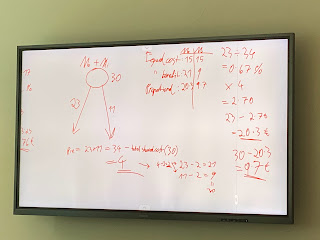MAN2002 Family Business Management Session #9 and #10
In today’s last sessions, we started off with the presentations and each respective groups received feedbacks and were asked questions afterwards. Later on, we were introduced to the roles and interests in a family business. The roles of the business indicate the role of the family member or non-family member that works for the company. The description of the roles dictates their duties and responsibilities that contributes to the said company. And lastly, the primary interest corresponds with their respective roles and their reason for working within the company. Then, we were given time to reflect back on the SAGE case study and applied the relevant information of the family members and their roles into the table below.
Name | Role Category | Describe Role | Primary Interest |
Thomas | Family owners who are exployees | Creator, CEO | To sustainably grow his business to transfer for the next generation |
Charles | Family owner, not employed anymore | Had a disagreement and went to work at another company
| Maybe selling his shares in the company |
Timothy | Family owner, employee | Senior manager of company | Advance his company and additional shares, long-term sustainability and the growth of the company |
Caroline | Family owner, employee | Consumer credit division | Moving forward with the business and advance the growth of the company |
David | Nonfamily owner | Outside investor | Increasing the economic value and financial support of the company |
Martina | Family member who are not employed nor owners | Spouse of owner | Protect family and that the company is working well, offering career perspective for her husband and children. |
Then, we were introduced into the concept of the inverted pyramid: the hidden power of owners, where it is used to show the strong influence the family owners have over the business. Generally, for venture capitalist or private equity investors, they don’t have much power and they are not influencing too much. Mostly, these institutional investors are disciplined and tech-based, they are keeping closed to the contract and they know how to manage the business but in family businesses, it is different. Emotional conflicts, negative influences, generational differences could lead to the company not making efficient decisions. Therefore, owners really influence the business and this concept can be used with the concept of the power to destroy and to sustain. For example, the 1st generation is creating the business. 2nd generation is maintaining it and the 3rd generation is destroying it. They have to power to destroy important companies and they also have the power to sustain it.
The 4-room model is important because in each room, we are discussing the tasks and problems of the respective room. The goal is to see who’s going to decide what and to increase efficiency of the company. The family members can be present in different rooms, like Thomas, he can be in up to 4 rooms. IF there a major acquisition, the management can recommend, it because it is not a daily operation nor the strategy, the mangers can recommend and the family members can be informed. The board will decide and the owner council will approve it. Board members run the decisions by the owner’s council but the owner is generally responsible who is going to become a part of the board members.
The family business transition is to understand how you're going to transfer your business from one generation to the next. You can either sell the business to an insider, outsider, put it up for an initial public offering or management buy-in, etc.
Family business tend to lack international knowledge and expertise. For example: they don’t have context to the local market, market evaluation selection (conservative industry or not), the business needs to find a market willing to pay a higher price to finance the product innovations. Moreover, exporting to the markets (distributors) is important as well. International marketing works in many ways such as social media marketing or through testimonial advertising of famous and professional musicians.
Then the professor stressed the vital theories and models that we needed to know for the exam preparation and left us some time to study for ourselves and ask questions if needed.

Comments
Post a Comment